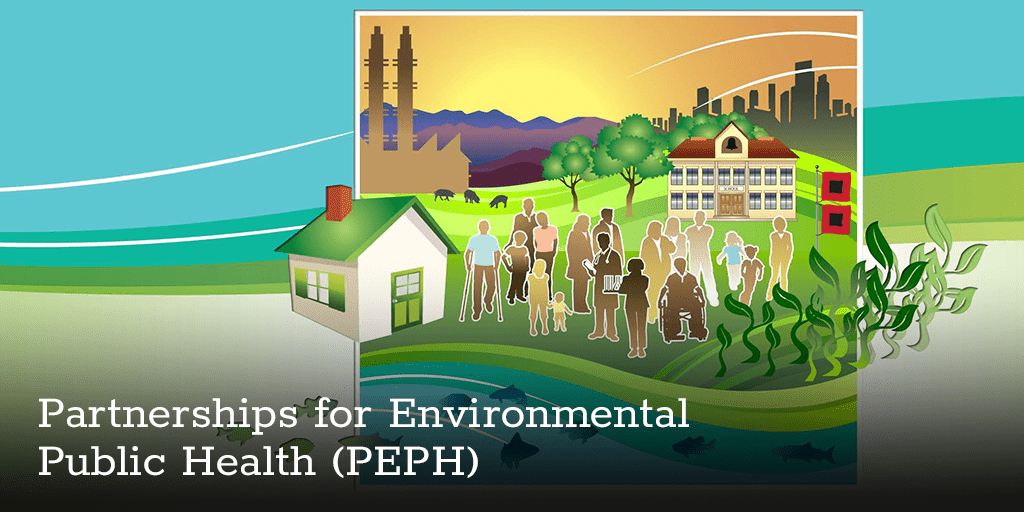Air Monitoring Network Builds Baltimore Community’s Capacity to Address Environmental Justice
Community organizations in the Curtis Bay neighborhood of Baltimore mobilized to form a partnership with researchers after an explosion at a neighboring coal facility in December 2021. The community-academic partners engaged residents in the development and implementation of ongoing air monitoring protocols in Curtis Bay. Efforts focused on understanding hyper-local air pollution near 70 industrial facilities, addressing residents’ environmental justice concerns, and building community capacity to monitor air quality and interact with state regulatory agencies to advocate for conditions that protect residents’ health. The air monitoring strategy is described in a September 2023 paper.
The researchers were from the NIEHS-funded Environmental Health Sciences Core Center at the Johns Hopkins University Bloomberg School of Public Health, the University of Maryland, and the Core Center at the University of California at Davis.
At the 2024 NIEHS Core Centers’ annual meeting, hosted by the Johns Hopkins Center, participants went on a tour of the Curtis Bay area and heard updates on the community-academic partners’ work.
“The scientific and technical capacity of our environmental health sciences core centers academics is helping to build the measurement strategy, but over time, the goal is for our community partners to sustain and adapt this work as their needs evolve,” stated Christopher Heaney, Ph.D., of Johns Hopkins, academic co-leader of the Core Center’s Community Engagement Core. “The annual meeting was an opportunity to share lessons and challenges with other community-academic partners, and we hope this strategy helps others see what can be achieved through a community-engaged research partnership.”
Environmental Justice Concerns in Curtis Bay
While the explosion at the coal terminal triggered this air monitoring project, residents have complained about air pollution for decades, stating that they keep their windows closed to keep out coal dust and that strong odors make their eyes water. Data show that residents of Curtis Bay have higher rates of heart disease and all types of cancer, especially lung cancer, than the rest of Baltimore City. Many residents have friends, family, and neighbors who have become sick or died from cancer or respiratory issues.
As a result of these experiences, residents formed community organizations that address environmental justice and housing issues, including the South Baltimore Community Land Trust and the Community of Curtis Bay Association, each of which is a key partner on this project.
Curtis Bay is a fenceline community, an area adjacent to industrial activity and air pollution sources that may pose risks to residents’ health. It is also home to 70 sources of stationary air pollution regulated by the Maryland Department of the Environment (MDE). These pollutants come from sources such as the city’s coal terminal and incineration facilities. The burning process emits particulate matter, heavy metals, and other toxic chemicals that threaten human health.
Machinery and a conveyer belt work with a coal pile.
`
Finding Links Between Industrial Activity and Air Quality
The nearest MDE sensors are 10 miles from the Curtis Bay community. To address a lack of local data collection, the community-academic partners set up 10 multi-pollutant air sensors. This network of sensors more accurately measures air pollution within the community than the more distant sensors.
The partners also installed two cameras to monitor activity at the coal terminal. Using the images, the partners can determine activities, such as ships docking and trains arriving, that may indicate coal is being moved around the terminal. The team documents the timing of these activities and merges it with data from the air sensors to determine how industrial activities relate to changes in air pollution burden.
One example of the monitoring strategy occurred when residents noticed an industrial fire near their homes and expressed their concerns to the two community organizations. The community-academic partners used sensor data and the cameras’ visual information to show that at the time of the fire, there were high levels of black carbon, particulate matter, and carbon monoxide. This instance showed how the measurement strategy could gather real-time data for community members and potentially support regulatory action.

An example of an industrial facility similar to those in the Curtis Bay area.
`
Partnership Facilitates Relationships and Builds Capacity
The community-academic partnership facilitated a relationship between the community and MDE. Before the project, residents expressed distrust of the agency due to past experiences in which MDE reduced air monitoring in the area. Residents also thought the agency had not done enough to regulate local industries. This project brought MDE into collaborative discussions about air monitoring, and now MDE provides technical support to maintain air monitoring through a collaborative grant from the Environmental Protection Agency. There are also regular opportunities for dialogue between community members, academic scientists, and the regulatory agency. The community-academic partners believe this relationship will help inform industrial permitting practices and improve community health.
“MDE’s involvement in the project brings an opportunity for community empowerment over issues they would like addressed through regulatory action,” reflected Heaney. “The community would like more to be done faster, and the dialogue happening around this work and the scientific information it supplies puts residents on a path to get their concerns addressed.”
The community-academic partners’ long-term goal is that residents maintain the monitoring network. Therefore, another aspect of the project involves training community members and students on the measurement network and data analysis. For example, an environmental justice course teaches students about environmental justice issues in Curtis Bay and how to conduct environmental health research. In 2023, these high school students participated in a summer environmental justice scholars program, and members of the first cohort have served as youth mentors for new cohorts.
The partners also continue to expand the air monitoring and pollution measurement strategy. An October 2024 paper includes results of the partners’ research that confirmed residents’ concerns that coal dust is found in residential areas. A September 2024 paper describes a mobile air pollution measurement strategy that addresses community members’ goals to characterize cumulative impacts of both stationary and mobile air pollution. The partners also plan to get a better understanding of the health impacts of air pollution on Curtis Bay residents.
Source link
www.niehs.nih.gov


